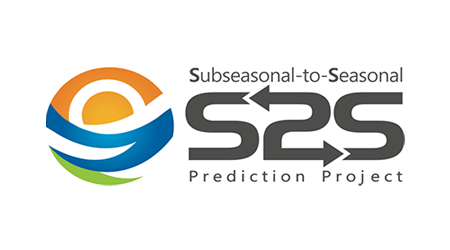
Sharing Geoscience Online – Joint YOPP-APPLICATE Session at EGU2020
11. May 2020
The IcePod with PPP Captain Thomas Jung
11. June 2020
In Phase II of the Subseasonal-to-Seasonal (S2S) Prediction Project, nine new ocean and sea-ice variables have been introduced to its database. Most of the S2S forecast systems now feature dynamical ice models and assimilate sea-ice and ocean observations.
The Subseasonal-to-Seasonal (S2S) Prediction Project is an initiative endorsed by the World Meteorological Organization (WMO) that aims to improve our understanding of the Earth system predictability at the S2S timescale from 15 to 60 days into the future, with special emphasis on high-impact weather events. The main outcome of this project is the implementation of a database that collects forecasts from several Numerical Weather Prediction (NWP) centers and research institutions all over the world. These forecasts are produced with state-of-the-art probabilistic fully-coupled forecast models, meaning that the atmosphere, ocean, and sea-ice model components interact and allow to simulate the complex feedbacks in the Earth system. Furthermore, these models are run multiple times from slightly different initial conditions, generating an ensemble of forecasts that takes into account the uncertainties of observations, physical parameterizations in the model, and the Earth system‘s chaotic nature. The S2S forecasts are available for an overall period of almost three decades, allowing us to draw robust conclusions and to develop a deep understanding of the system. There are many beneficial aspects for the Polar Prediction community to explore the S2S database and to benefit from such a well-structured initiative. Firstly, there are good reasons to believe that the evolution of the sea ice, polar oceans, and snow on land could be predictable at the S2S timescale. Secondly, the description of the polar climate in the S2S forecast systems has grown in complexity since the start of the S2S initiative in November 2013. Most of the forecast systems now feature dynamical ice models and assimilate sea-ice and ocean observations. And finally, the focus of Phase II of the S2S Prediction Project has been broadened beyond the atmospheric domain, with the introduction of nine new ocean and sea-ice variables to the database.
These include:
• Depth of 20°C isotherm;
• Mean sea-level practical salinity in the upper 300 meters;
• Mean sea-level potential temperature in the upper 300 meters;
• Ocean mixed-layer thickness defined by sigma theta 0.01 kg/m3;
• U-component of surface current;
• V-component of surface current;
• Sea-ice thickness;
• Sea-surface height;
• Sea-surface practical salinity.
Since 1 January 2020, these new variables are archived in the S2S database in the GRIB2 format on a 1-degree latitude/longitude grid, they are openly available and ready to be investigated by the scientific community. “The new variables will help researchers to explore the predictability of ocean and sea-ice conditions and to compare the representation of air, ocean and sea-ice interactions in different models,” says Frederic Vitart, ECMWF scientist and co-chair of the S2S Prediction Project. Such additional information will increase our ability to understand and possibly correct the biases in models that so far limit the forecast skills in polar regions. At the same time, it casts light on still unknown or poorly understood predictability mechanisms, especially in polar regions. The implementation of the new ocean and sea-ice variables is thus an encouraging example of how the interaction between the S2S and the Polar Prediction communities improves our comprehension of the polar weather and climate. Additional information can be found on the S2S Prediction Project and ECMWF websites.
by Lorenzo Zampieri, Alfred Wegener Institute and European Centre for Medium-Range Weather Forecasts



